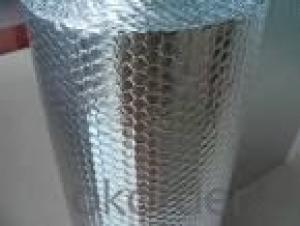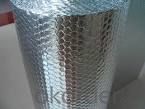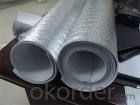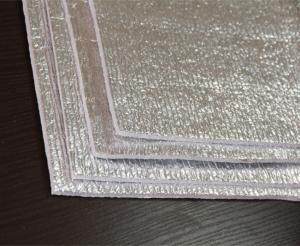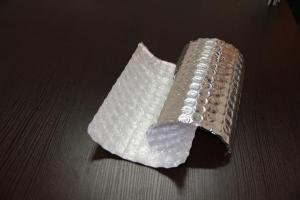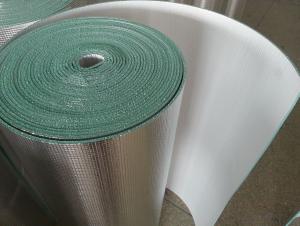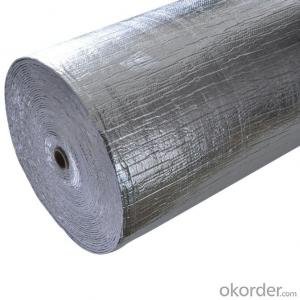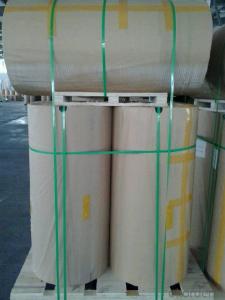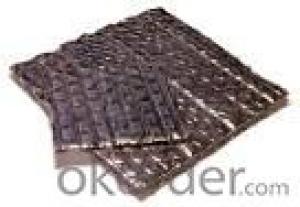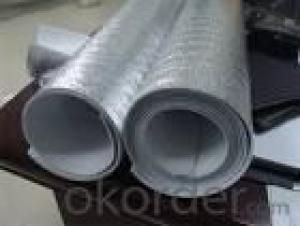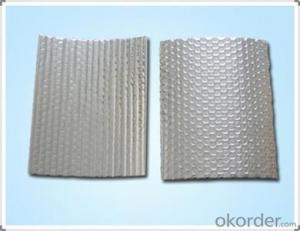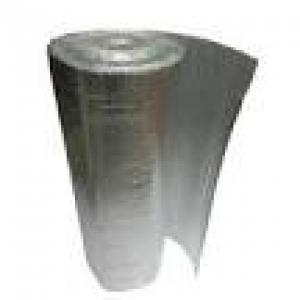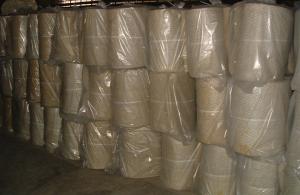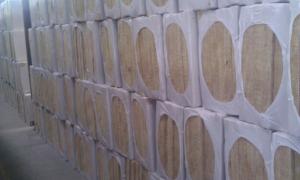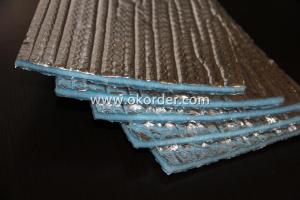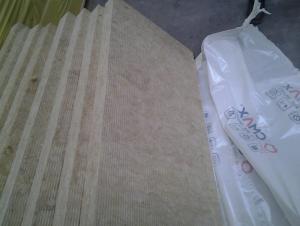Roofing Insulation Philadelphia PA - Aluminum Foil Coated Bubble Insulation Type 20
- Loading Port:
- Shanghai
- Payment Terms:
- TT OR LC
- Min Order Qty:
- 10000 m²
- Supply Capability:
- 100000 m²/month
OKorder Service Pledge
OKorder Financial Service
You Might Also Like
Bubble Insulation Benefits:
Reflects 96% of radiant heat
Non-toxic / Non-carcinogenic
Does not require protective clothing or respirators to install
Durable and lightweight
Does not compress, collapse or disintegrate
Vapor and radon retarder
Easy to cut and install
Permanent and maintenance-free
Does not provide a growth medium or nutritive value for fungus, insects, or rodents
Does not support the growth of mold or mildew
Not affected by moisture or humidity
Lowers heating and cooling costs year round
Bubble Foil Application:
Metal & Steel Buildings
Homes
Roof Underlayments
Cathedral Ceilings
Crawl Spaces
Hot Water Heaters
Basement Walls
Floors
Garage Doors
Concrete slabs
Driveway snow melts
Pole barns
Post frame buildings
Poultry barns
Animal kennels
Temperature sensitive storage areas
Air Bubble Foil Insulation Tech Data:
Material Structure: AL/Bubble/AL | ||
Bubble Size:D10mm*H 4mm(10*2.5/10*4/10*6/20*7/25*10)choose the bubble size | ||
Bubble Weight:0.13kg/m2 ( can be customized ) | ||
Roll Width:1.2m (lenth can be customized) | ||
PROPERTIES | TEST DATA | UNIT |
Thickness | 3.5-4 | mm |
Weight | 250 | g/m2 |
Emissivity | 0.03-0.04 | COEF |
Thermal conductivity | 0.034 | w/m0 |
Apparent Density | 85 | kg/m3 |
Reflectivity | 95-96 | % |
Water Vapour Transmission | 0.013 | g/m2kpa |
Corrosion | doesn't generate | |
Tensile Strength(MD) | 16.98 | Mpa |
Tensile Strength(TD) | 16.5 | Mpa |
- Q: How do I find roofers who are specialised in protection against invaders from outer space. I called 10 and they said they would call me back, but no one did so far. It must be really complicated.
- Make a hat out of tin foil like some of the people in the mental hospital do. No roofer in his right mind would go near your house if you tell him this outlandish story you claim to be circulating about space invaders. Mentally unstable people tend to scare normal folks away in droves, see a therapist or get a new joke writer because I'm not buying it either.
- Q: I would like to find foam type tiles for my roof of decking, insulation?
- www.okorder I checked the website I posted by searching 'foam roofing' on google. This link is what I found but there are others... Google it to find your best deal. I think I will spray this stuff under my pier and beam home just to insulate. Thanks for the tip! I can buy this product, apply it myself and cut the cost down to 1/3 or more.
- Q: ... building code max. (R-50)???
- All the answers are OK, BUT nobody has said anything about the over hang of the house. This is not insulated and when the water runs off it comes to the roof edge and then freezes. To get away from this do what I did and move to Florida, If that is not possible get the special heat tapes for roofs and install in a "V" configuration and that will help a hole lot. Hope that this helps you out.
- Q: I live in the top most floor of a flat. Is it worth to insulate the roof (from inside) with styrofoam(thermocole) to reduce the airconditioning load. Is it really economical with respect to cost of insulation and savings gained? Any experiences?
- if u mean roof as just below the shingles this is not recommended as it will cause the shingles to become very hot and prematurely fail,,the best way to lower the heat in an attic is ventilation,,if u have an attic its best to insulate the floor of the attic and lots of ventilation
- Q: if you had snow and all the snow is off your roof and the house nex store has snow do we need insulation?
- Yes,you do need to insulate your attic. Heat rises. If you look around the neighborhood and everyone else has snow on there roof and you do not than you need to insulate your attic because your heat is going through the roof and melting the snow off of it. Easy job to do.
- Q: on a traditional pitched roof construction,where is heat insulation usually provided?
- On the ceiling.Paper side down to help protect against moister.
- Q: Have a patio with metal roof, gets very hot during summer. Will Great Stuff insulate and stick to hot roof during summer? Thanks
- Great Stuff (and similar products) stick to just about anything...and with vengeance. If you haven't used it ever, DO NOT let it get on anything else: it is the nastiest. To your Q; It's possible to cut this stuff after it dries up, but still would look like crap. Get some sheets of 'blue board' (an extruded polystyrene) and cut it to fit around structural members. Cuts with a hand saw, knife, and is easy to work. There's a glue for it but I haven't used it on all surfaces. It would look far better than Great Stuff alone.
- Q: What is the difference between roof and loft insulations?
- Potentially that the roof itself is insulated on the underside. A loft insulation could be that the base or floor of the loft/ attic is insulated. Otherwise, I'm not sure.
- Q: I would like to know which direction the one side with foil faces. The roof or the interior of the room?This is an attic room. Roof being "raw" i mean that it looks like cedar tongue in groove boards...then shingles on top of them. Which way do i face the foil side of the sheet..?thanx
- Super Tuff R Insulation
- Q: We bought a house and put new metal roof on over the shingles. (first please don't say, this or that should have been done, just what I can do now) Any how, we have put a lot of money into the house, roof, all new electrical, all new plumbing, etc., I had to make the house in a "living in condition" with a low budget. ............ the house does not have insulation in ceilings, this has to be done next summer. (budget) Any how, the metal roof has condensation under it, only in the ridge vent area. This drips a little and I need to fix it. Now, I know that insulation wouldprobablyy fix this, but we don't have the money right now, so I need help on what to do? Is there anything that with a $100 to $200 budget can be done? I have searched a little, and maybe use a "spray-on"insulation help? The area is where the gap is at the peak and where themetall overlaps the ridge vent. (I thinkthat'ss what it's called)Thank you! :)
- The problem might be resolved by venting the attic. You need to have an air exchange in the attic to prevent condensation.
Send your message to us
Roofing Insulation Philadelphia PA - Aluminum Foil Coated Bubble Insulation Type 20
- Loading Port:
- Shanghai
- Payment Terms:
- TT OR LC
- Min Order Qty:
- 10000 m²
- Supply Capability:
- 100000 m²/month
OKorder Service Pledge
OKorder Financial Service
Similar products
Hot products
Hot Searches
Related keywords
